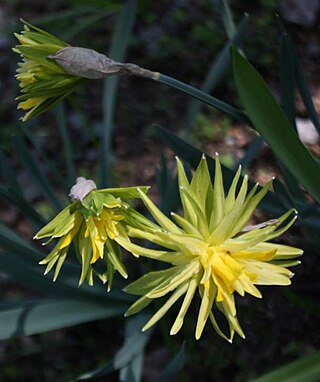
Narcissus is a genus of predominantly spring flowering perennial plants of the amaryllis family, Amaryllidaceae. Various common names including daffodil, narcissus, and jonquil are used to describe all or some members of the genus. Narcissus has conspicuous flowers with six petal-like tepals surmounted by a cup- or trumpet-shaped corona. The flowers are generally white and yellow, with either uniform or contrasting coloured tepals and corona.

Tarsonemidae is a family of mites, also called thread-footed mites or white mites.

The Prostigmata is a suborder of mites belonging to the order Trombidiformes, which contains the "sucking" members of the "true mites" (Acariformes).

Steneotarsonemus spinki, the panicle rice mite, spinki mite, or rice tarsonemid mite, is a species of mite in the family Tarsonemidae, the white mites. It is a serious pest of rice in tropical Asia, Central America, and the Caribbean.
Steneotarsonemus laticeps, the bulb scale mite, is a species of mite in the family Tarsonemidae, the white mites. Amongst plants attacked by this mite are species of Narcissus.

Narcissus 'Rip van Winkle' is an heirloom cultivar of Narcissus, which was first introduced commercially in 1884. When the cultivar was produced is unknown, however it is believed this historic cultivar originated in Irish gardens. The cultivar was first distributed by plantsman William Baylor Hartland of Country Cork, Ireland.





